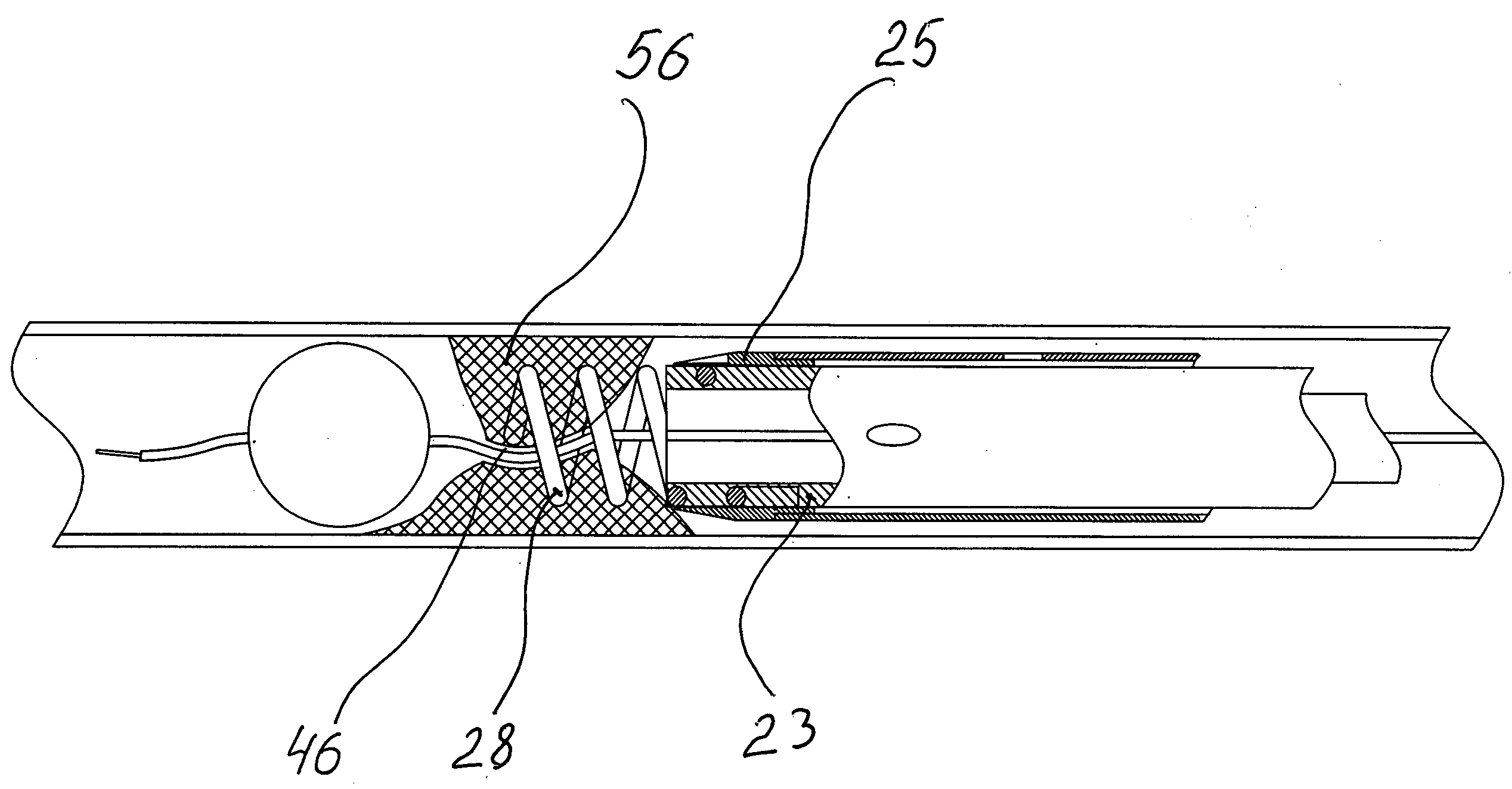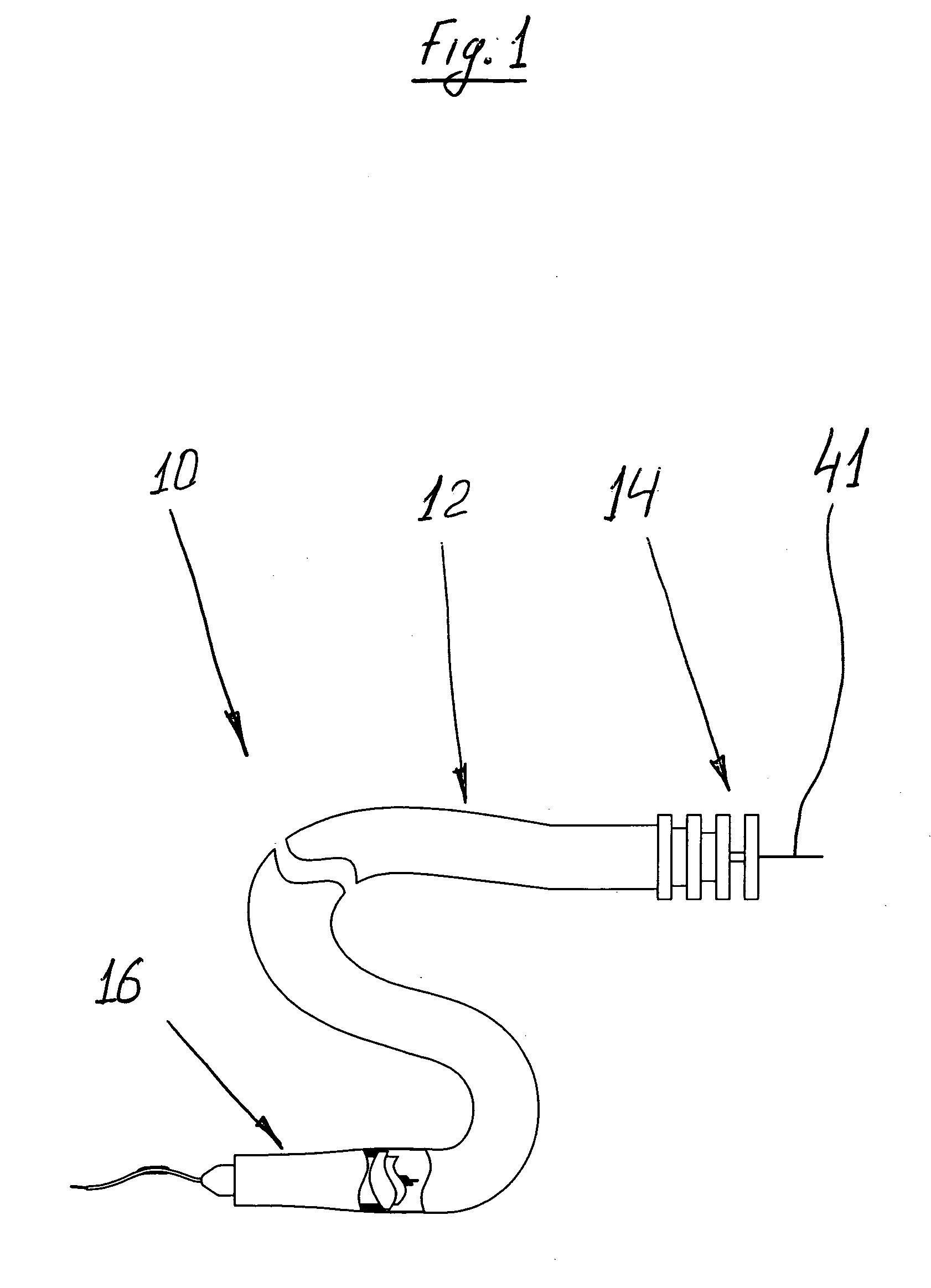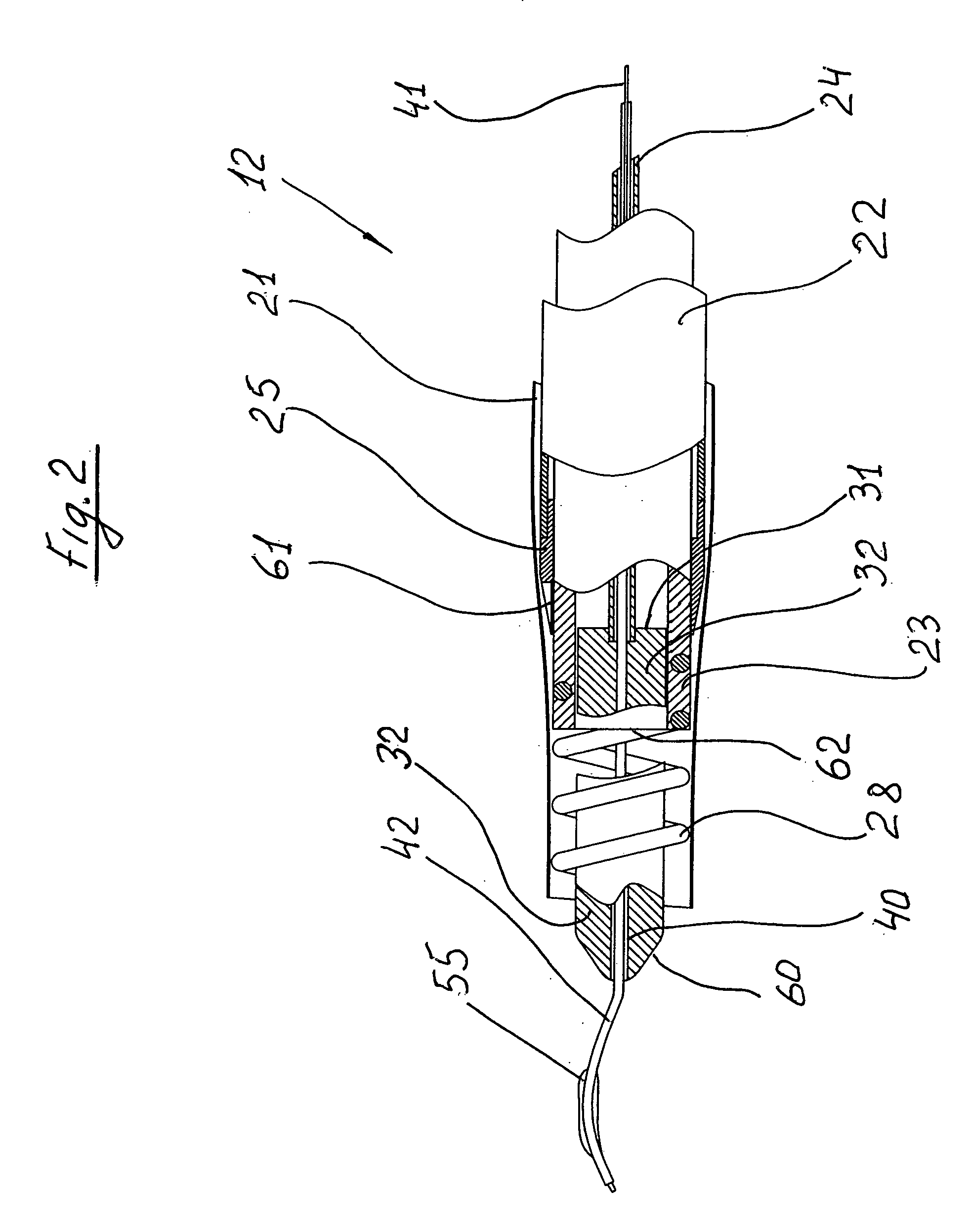Thrombectomy catheter with a helical cutter
a helical cutter and catheter technology, applied in the field of thrombocystectomy or atherectomy devices, can solve the problems of time-consuming, traumatic and expensive current transcatheter procedures for opening clogged vessels, and achieve the effects of reducing the risk of clogging and bleeding
- Summary
- Abstract
- Description
- Claims
- Application Information
AI Technical Summary
Benefits of technology
Problems solved by technology
Method used
Image
Examples
Embodiment Construction
[0035]With reference initially to FIG. 1, a surgical instrument, indicated generally by reference numeral 10 comprises an elongate flexible tubular body 12, having a proximal end 14 and a distal end 16, as well as guide wire 41. A control 18 is preferably provided at or near the proximal end 14 of the tubular body 12 for permitting manipulation of the instrument 10.
[0036]With reference now to particularly sectioned view of FIG. 2 the tubular body 12 comprises of four tubing coaxially located one inside the others.
[0037]The “outside tubing”21 which represents the thin wall extrusion (wall thickness ˜0.0005 . . . 001″) comprises the “cutter tubing”22. Inside of the cutter tubing 22 you could find “screw tubing”23 which also comprises central tubing 24.
[0038]With the reference to the FIG. 3 the proximal area 26 of the tubular cutter 25 is permanently connected to the distal portion of the tubing 22 by any available means which aren't discussed. The corkscrew cutter 25 and tubing 22 are...
PUM
 Login to View More
Login to View More Abstract
Description
Claims
Application Information
 Login to View More
Login to View More - R&D
- Intellectual Property
- Life Sciences
- Materials
- Tech Scout
- Unparalleled Data Quality
- Higher Quality Content
- 60% Fewer Hallucinations
Browse by: Latest US Patents, China's latest patents, Technical Efficacy Thesaurus, Application Domain, Technology Topic, Popular Technical Reports.
© 2025 PatSnap. All rights reserved.Legal|Privacy policy|Modern Slavery Act Transparency Statement|Sitemap|About US| Contact US: help@patsnap.com



